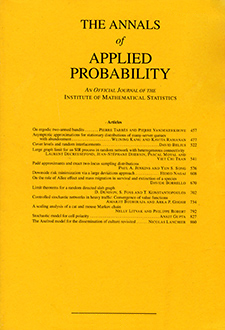Abstract
We study the following sequential assignment problem on a finite graph
Citation
Antal A. Járai. "Phase transition in a sequential assignment problem on graphs." Ann. Appl. Probab. 27 (4) 2098 - 2129, August 2017. https://doi.org/10.1214/16-AAP1250
Information





